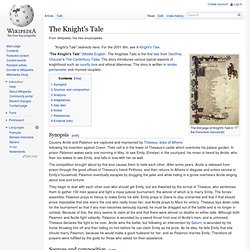

Essential Chaucer: Love, Courtly and Otherwise. [Cross-references includedat the bottom of the page] 232.

COLLINS, MARIE. "Love, Nature and Law in the Poetry of Gower and Chaucer. " In Court and Poet:Selected Proceedings of the Third Congress of the International CourtlyLiterature Society (Liverpool 1980). Edited by Glyn S. Investigates Chaucer's and Gower's depictions of the morality of love, evident in their presentations of love in collocations with legal terminology. 233.DODD, WILLIAM G. Dated but useful summary of the genesis and conventions of courtly love, and its presence in late-medieval French works, especially Guillaume de Lorris's portion of Roman de la rose. 234. Investigates what courtly love meant to Chaucer, exploring its various dominant characteristics in earlier literature (troubadors, trouveres, Italian, fourteenth-century French) and demonstrating Chaucer's cautious use of these strains. 235. 236. 237. 238.
See also entries 6, 77, 169, 227, 229, 286, 321, 364, 697, 700, 828, 880, 895, 921. Full text of "Courtly love in Chaucer and Gower" English Literature Databases. Wikipedia. Courtly love. God Speed!

By Edmund Blair Leighton, 1900: a late Victorian view of a lady giving a favor to a knight about to do battle Courtly love was a medieval European conception of nobly and chivalrously expressing love and admiration.[1] Generally, courtly love was secret and between members of the nobility.[2] It was also generally not practiced between husband and wife.[3] The term "courtly love" was first popularized by Gaston Paris in 1883, and has since come under a wide variety of definitions and uses, even being dismissed as nineteenth-century romantic fiction. Its interpretation, origins and influences continue to be a matter of critical debate. Origin of term[edit] Courtly vignettes on an ivory mirror-case, first third of the 14th century (Musée du Louvre) The term and Paris's definition were soon widely accepted and adopted. Courtly Love comes in the basket History[edit] Andalusian and Islamic influence[edit] According to G.
Analysis[edit] Literary convention[edit] The Knight's Tale. "The Knight's Tale" (Middle English: The Knightes Tale) is the first tale from Geoffrey Chaucer's The Canterbury Tales.

The story introduces various typical aspects of knighthood such as courtly love and ethical dilemmas. The story is written in iambic pentameter end-rhymed couplets. Synopsis[edit] Cousins Arcite and Palamon are captured and imprisoned by Theseus, duke of Athens following his invention against Creon. Their cell is in the tower of Theseus's castle which overlooks his palace garden. The competition brought about by this love causes them to hate each other. Sources and composition[edit] Although the tale is considered a chivalric romance, it is markedly different from either the English or French traditions of such tales.[3] For instance, there is the inclusion of philosophical themes—mainly of the kind contained in the Consolation of Philosophy of Boethius—astrological references and an epic context.[4][5]
The Merchant's Tale. "The Merchant's Tale" (Middle English: The Marchantes Tale) is one of Geoffrey Chaucer's Canterbury Tales.

In it Chaucer subtly mocks antifeminist literature like that of Theophrastus ('Theofraste'). The tale also shows the influence of Boccaccio (Decameron: 7th day, 9th tale[1]), Deschamps' Le Miroir de Mariage, Roman de la Rose by Guillaume de Lorris (translated into English by Chaucer), Andreas Capellanus, Statius and Cato. The tale is found in Persia in the Bahar Danush, in which the husband climbs a date tree instead of a pear tree. It could have arrived in Europe through the One Thousand and One Nights, or perhaps the version in book VI of the Masnavi by Rumi. Though several of the tales are sexually explicit by modern standards, this one is especially so. The main character, Januarie (or January) (a senex amans), is a 60-year-old knight from the town of Pavia, in Lombardy.
Summary of the tale[edit] The Fabliau debate[edit] eChaucer ¤ Chaucer in the Twenty-First Century. The Merchant's Tale. The Merchant's Prologue. The Epilgogue To The Merchant's Tale. The Knight's Tale. MED Entry Search. Dictionary. Home : Oxford English Dictionary.